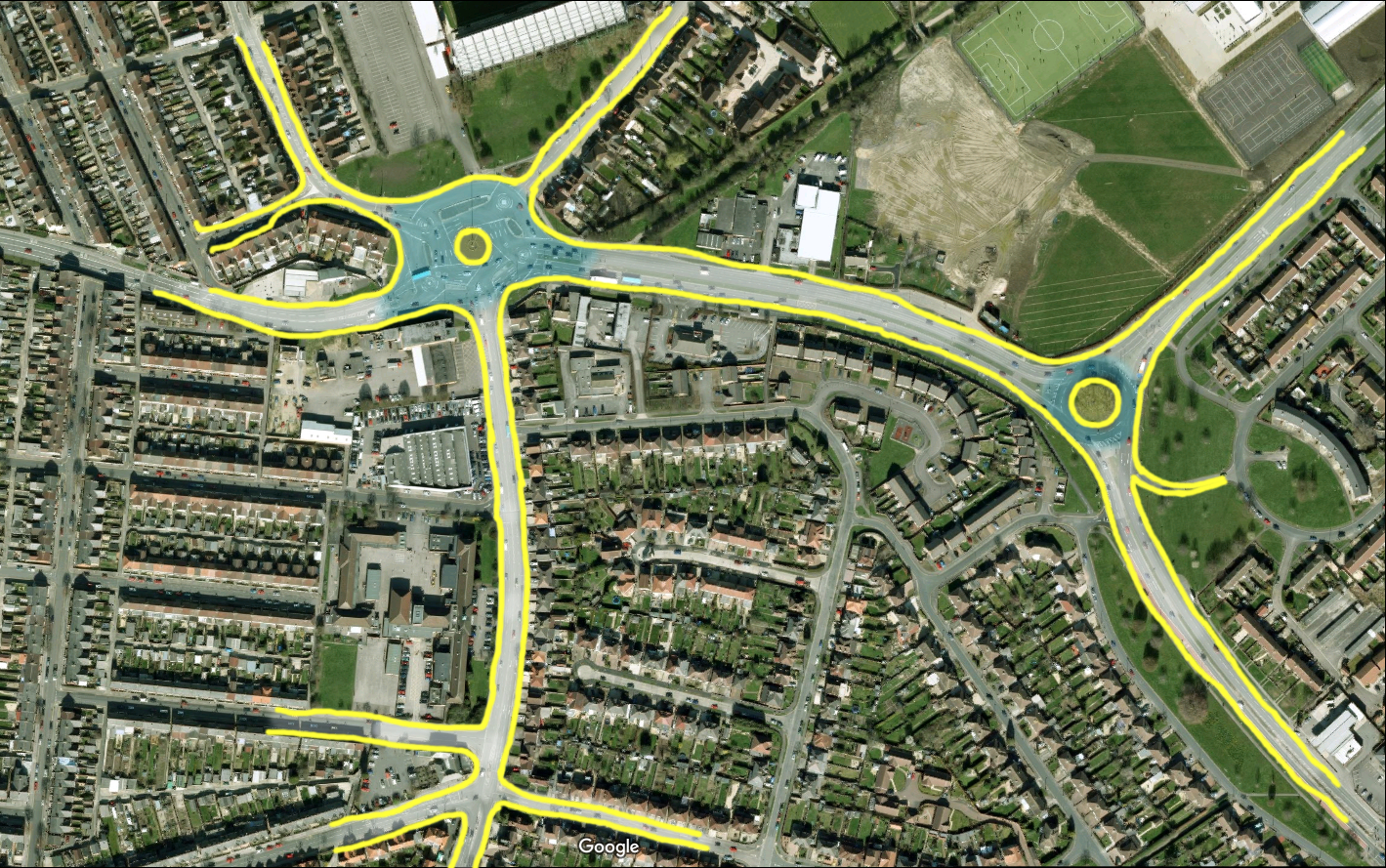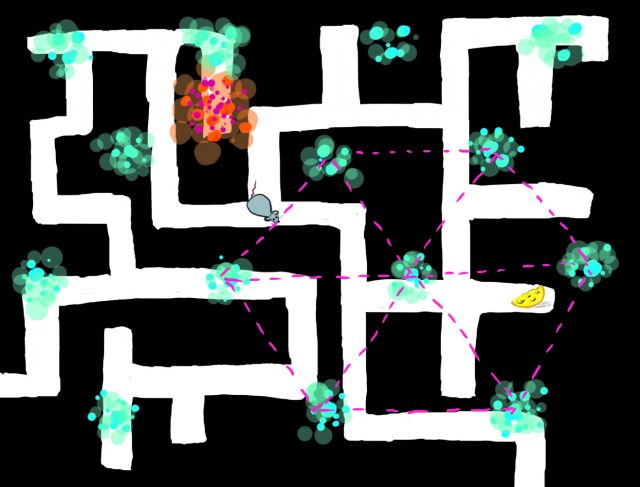The Brain’s Google Maps

If you are a rat running around a maze, there are specialised neurons in your brain for keeping track of where you are. One set of neurons, called place cells, fire every time you go past a particular location. Another set of neurons, called grid cells, fire for multiple locations across the environment. Their firing corresponds to the intersections of a sort of hexagonal grid, something like a beehive. Recently a Nobel prize was awarded to John O’Keefe, May-Britt Moser and Edvard Moser for the discovery of this navigational system.

The blobs show the hypothetical location of where a place cell (orange)
or grid cells (blue) would fire as the rat moves through the environment. Notice the
hexagonal arrangement for the grid cells. Image credit: Yulia Revina
Grid cells are located in the entorhinal cortex – a region of the brain on the temporal lobe, near the hippocampus. However, this region has also been implicated in spatial memory, suggesting that grid cells might be involved in visualising navigation, even when you are not currently moving. The early work on spatial navigation was done on rats, but a study recently published in Current Biology has looked at grid cells in the human brain using functional MRI1. The researchers were interested in seeing whether grid cells would be involved in imagined navigation, as well as actual movement through the environment.
In a virtual reality task, participants were asked to both physically move and imagine moving to the locations of various objects in a virtual arena. In the imagination trials the participants had to rotate their viewpoint so that they were facing the remembered location of the object. They then closed their eyes and imagined moving from their current location to the memorised location. They were also asked to imagine moving as vividly as possible and at a similar pace to their actual movement in other parts of the experiment.
The functional MRI data revealed brain activation consistent with grid-cell firing, both when physically navigating and when simply visualising the same navigation. It seems that grid cells are involved in both remembering the past and imagining the future, as well as current spatial navigation.
The researchers also suggest that grid cells may be involved in switching our viewpoint during visual imagery, and highlight a more general role for these neurons in memory and thinking about the future. This may explain why patients with Alzheimer’s disease often have difficulties visualising, as well as remembering things: the entorhinal cortex is one of the first areas to be affected by the disease.
The overlap between actual spatial navigation and memory is perhaps not so surprising. Remembering where we are in space even after we stop moving is a useful behaviour for an organism. But even episodic memory, that is, memory about events in your life, has a spatial aspect. For example, people remembering a meal in a restaurant will often be able to recall where in the room they were sitting. Our memory is more than just isolated personal facts, but seems to be closely linked to our sense of location.
Edited by Sarah Spence










